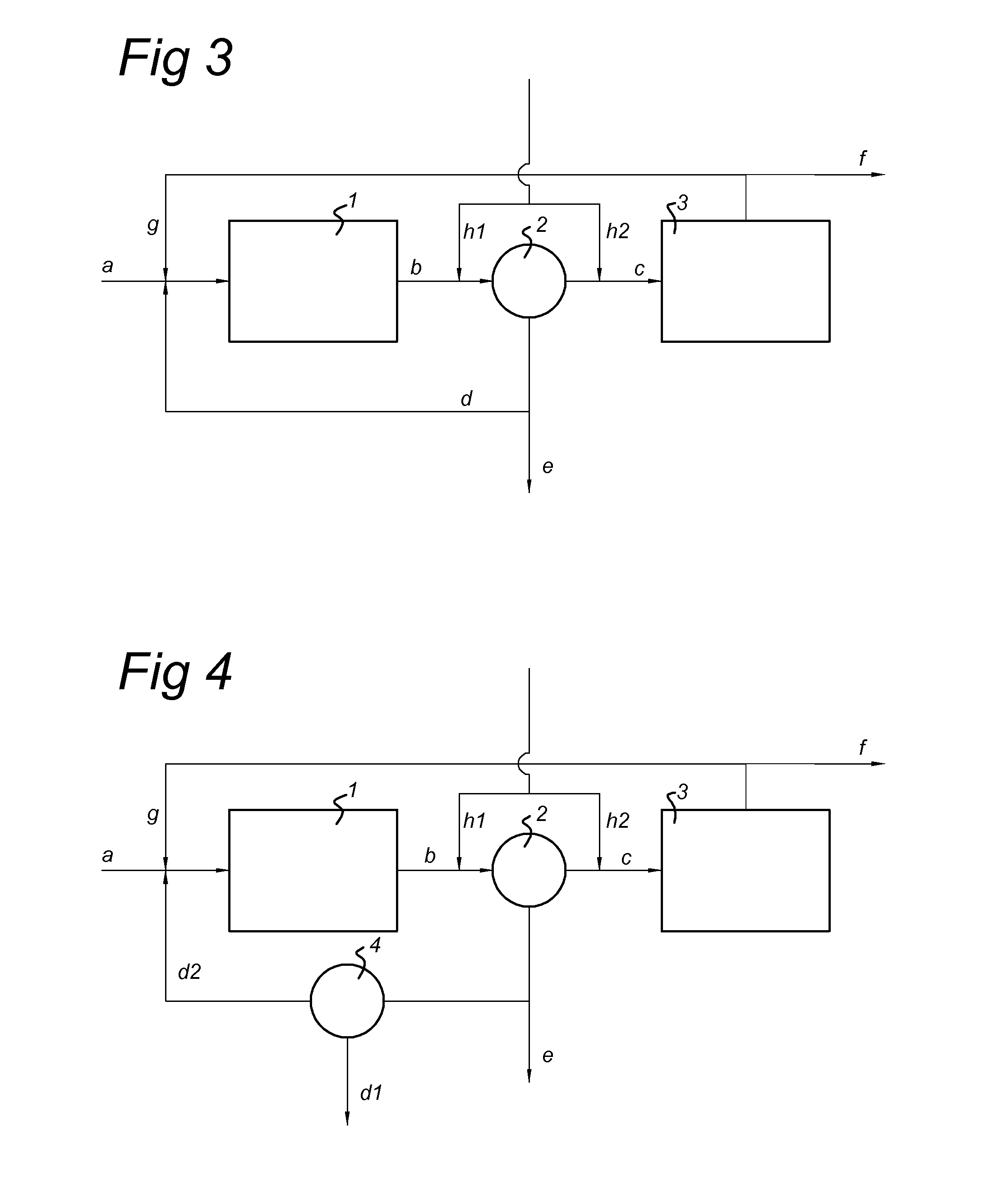Process for producing methane from biomass
a technology of biomass and methane, which is applied in the field of process for producing methane from biomass, can solve the problems of inability to meet the requirements of biomass conversion rate, and inability to use additional streams of chemicals, etc., and achieves the effect of improving the yield of methan
- Summary
- Abstract
- Description
- Claims
- Application Information
AI Technical Summary
Benefits of technology
Problems solved by technology
Method used
Image
Examples
Embodiment Construction
[0018]In the following, the two-stage methanogenesis of the present invention will be discussed in terms of the elements shown in the FIGS. 1-4. The figures are merely illustrative and do not limit the teaching of the invention. Modifications or changes therein without departing the scope of the invention are considered to fall within the ambit of the skilled person's knowledge.
[0019]The invention pertains to a process for producing methane by a two-stage anaerobic digestion of organic feed, comprising:[0020]i) subjecting an organic feed suspension (a) to acidogenesis and methanogenesis in a first reactor (1);[0021]ii) withdrawing an effluent (b) from said first reactor and subjecting it to solid / liquid separation (2), thus obtaining effluents high (d) and low (c) in solids, wherein the volatile fatty acid (VFA) concentration in said first reactor is controlled by the withdrawal rate;[0022]iii) subjecting the effluent low in solids (c) to acidogenesis and methanogenesis in a second ...
PUM
| Property | Measurement | Unit |
|---|---|---|
| concentration | aaaaa | aaaaa |
| hydraulic residence time | aaaaa | aaaaa |
| hydraulic residence time | aaaaa | aaaaa |
Abstract
Description
Claims
Application Information
 Login to View More
Login to View More - R&D
- Intellectual Property
- Life Sciences
- Materials
- Tech Scout
- Unparalleled Data Quality
- Higher Quality Content
- 60% Fewer Hallucinations
Browse by: Latest US Patents, China's latest patents, Technical Efficacy Thesaurus, Application Domain, Technology Topic, Popular Technical Reports.
© 2025 PatSnap. All rights reserved.Legal|Privacy policy|Modern Slavery Act Transparency Statement|Sitemap|About US| Contact US: help@patsnap.com


